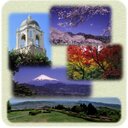0 Likes
The Order of St. Dominic founded his monastery in San Juan de Pasto in 1572, immediately began building his church of Santo Toribio was called until the late eighteenth century, the square was always known as Santo Domingo. The church occupied the spot where now stands the beautiful temple of Christ the King, the Society of Jesus.
They spent several years in construction, with thick walls made of rammed earth or adobe walls, masonry arches and columns. The Judge of Quito Luis de Quinones said in its report of 1615 that the temple of the monastery of Santo Domingo was "very good church, with chapels and some devotional images." It should be recalled here that the priests of the Society of Jesus was established in Quito in 1585 and gave missions in Pasto in 1589 and 1614. Its success was so remarkable that people requested the establishment of the Jesuits in Pasto, after repeated requests took up residence in the city to 1644 and in 1711 founded the convent, and school opened in 1717. With donations and alms began construction of a church and school, works largely advanced by one and another were located where today stands the University of Nariño and the houses adjacent to the race 24. With consent of parents served the education of youth pastusa until September 7, 1767, the day he left the city bound by the suppression of the Society of Jesus in the dominions of Spain, ordered by Carlos III.In 1797 the house was the Jesuit College was the barracks and the walls started to build the church were abandoned ruins appeared a large building. When the Jesuits returned to Pasto were entrusted with the Church of Santo Domingo. At the temple is not ruined colonial forces of nature until 1930, and in that year the Jesuit priests determined to break down the old church and build in its place the beautiful Temple of Christ the King who is without doubt one of the best and most beautiful city. Built around the 30's of XX century, thanks to the idea of a Jesuit priest Rafael Toro, rector of the Colegio San Francisco Javier, raised in the same place occupied by the church of Santo Toribio in 1572, when he arrived in the town of Pasto the order of Santo Domingo. In addition to inheriting Dominica community physical space, houses the Cristo Rey statue of Christ of Sibundoy, acquired in the year 1583 and considered one of the religious and artistic treasures of the temple, the constant object of love of the people of Pasto and of the images in the city has received more than worship. ARCHITECTURAL STYLE AND DESIGN ART On the facade of the temple, the Gothic Roman type, the twin towers demonstrate that crown with angels, one at each corner, and the center rises to 36 meters high, the dominant image of Christ the King surrounded by sculptures representing humanity. This imposing statuary corresponds to the ingenuity and artistic conception of the "Sculptor of the Winds", the teacher Marceliano Vallejo native of the municipality of El Contadero, Nariño. Likewise, the massive sculpture stands outside of San Ignacio de Loyola, made of marble by the sculptor Ecuadorian Eloy A. Campos. Inside, on the wall of the facade shows two large oil paintings painted by the artist Isaac Santacruz Nariño .. In the central altar is venerated image of the Sacred Heart of Jesus. Around nineteen works are carved in wood of great artistic value, eleven of them worked for eight Ecuadorian artists and master Alfonso Zambrano pastuso Payan. The latter were donated by the businessman Julio Jimenez to the Jesuit community. Alfonso Chaves pastuso Enriquez The master of aestheticism with gold foil, shaped his laborious art in this temple altars, as well as others in the city. In the sacristy of the sacred vestments embroidered in silver and gold, attributed to the generosity of Queen Juana la Loca, who is said to the edges with his own hand to be sent as two separate gifts to the cities of Pasto and Tunja. Cristo Rey is one of the most important works of religious architecture. About the temple and its architecture says Dr. Guillermo Edmundo Chavez, "raises a lot of praise this temple that marks a new goal to excel in our expressions of art. His style is parted from the usual lines of the Romanesque, to devise an original deployment modern Romanesque structure of slender columns and arches very broad, permitting consideration of any part of the whole wonderful. The windows in its two sections, are modern lines and simple but admirable complement the decor, with its stunning stained glass. Look outside the two towers battlements. In the vast grounds include a crucifix is pious tradition, two altars donated by families Immaculate Principals and beautiful "work of master Isaac Santacruz.
...




